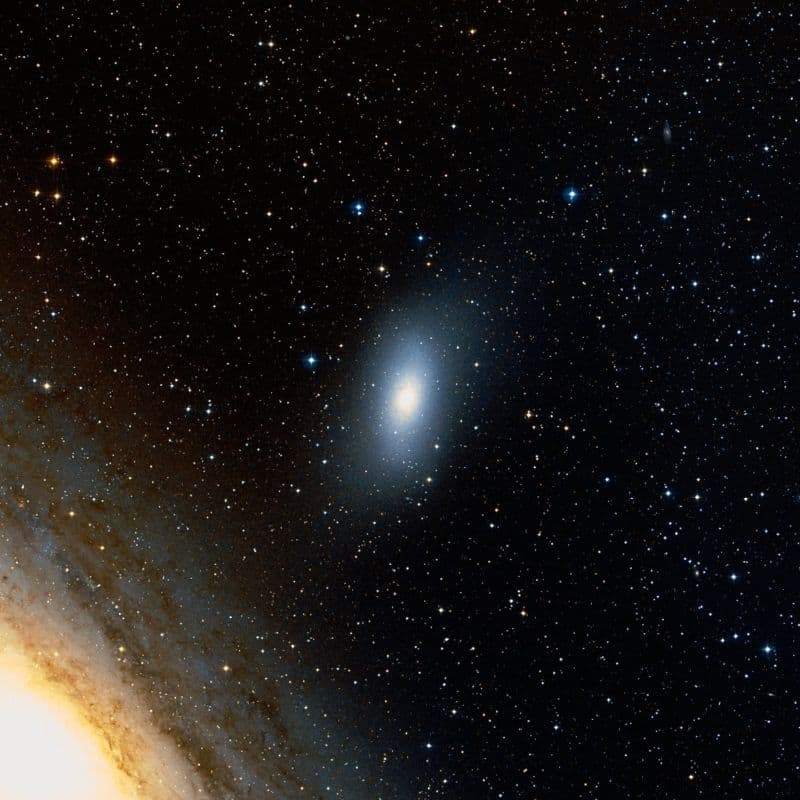The Cosmos with M110
Messier 110 shows evidence of recent star forming activity as it contains a population of young blue stars at its centre. It also has some dust, which is unusual for a galaxy of this type and likely a result of interaction with its large neighbour, M31. M110 is classified as a peculiar elliptical galaxy because of its unusual dark structures and signs of recent star formation. The galaxy does not appear to have a supermassive black hole at its centre.
As a satellite galaxy of M31, M110 is a member of the Local Group. It is one of at least 14 dwarf galaxies orbiting Andromeda, and the second brightest of Andromeda’s satellites, after Le Gentil (M32).
Messier 110 is often catalogued as a dwarf spheroidal galaxy, which makes it the only galaxy of this type listed in the Messier Catalogue. It is, however, much brighter than other galaxies of this kind and is sometimes classified simply as a spheroidal galaxy. M110 has an estimated mass of between 4 and 15 billion solar masses.
Messier 110 is estimated to contain about 10 billion stars and has a population of at least eight globular clusters. The brightest of these, G73, is of 15th magnitude and can be seen in large amateur telescopes. 2.674 million light years distant.
